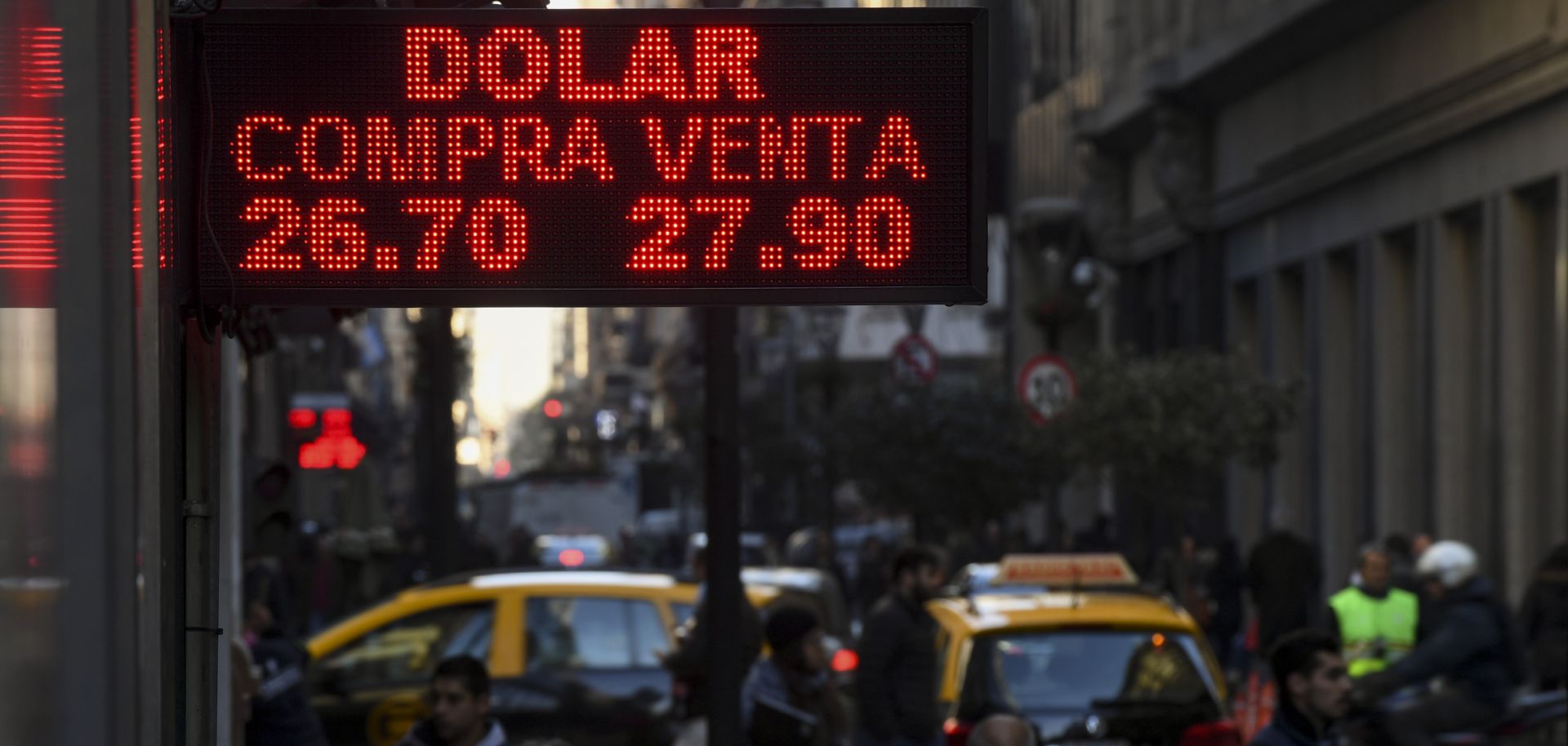ASSESSMENTS
How a Rising U.S. Dollar Puts Argentina's and Brazil's Economies at Risk
Jun 28, 2018 | 12:35 GMT

Currency exchange values posted in Buenos Aires, Argentina, on June 15, 2018. Argentina's peso and Brazil's real are among the world's most vulnerable currencies to a rising U.S. dollar.
(EITAN ABRAMOVICH/AFP/Getty Images)
Highlights
- Argentina's financial capacity to deal with a rising U.S. dollar is limited, and a weakening peso will cause it to miss its inflation target this year. But not all news is bad news: The country recently was upgraded from frontier to emerging market status.
- Brazil's currency is also expected to depreciate further against the dollar. But its trade surplus, low inflation rate and other economic strengths will ease the dollar's negative effects.
- Uncertainty about the outcome of Brazil's presidential vote in October could cause the central bank to raise interest rates, which would slow economic growth.
Subscribe Now
SubscribeAlready have an account?
